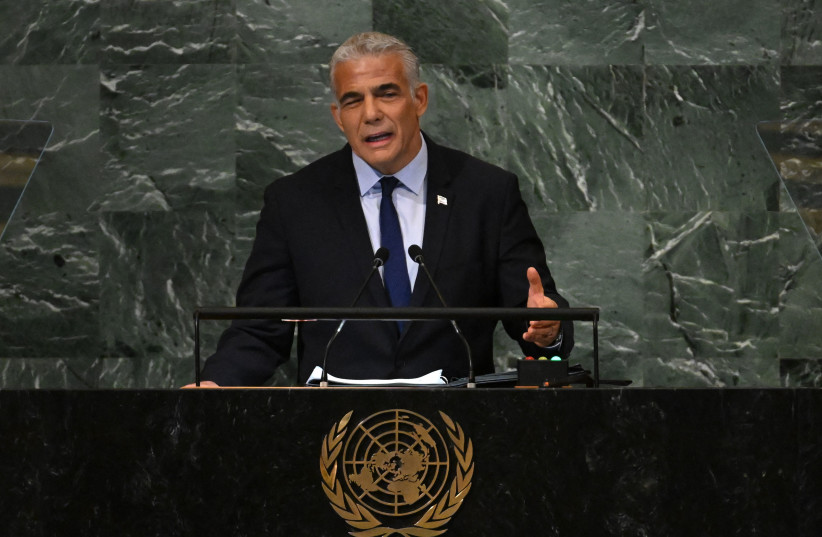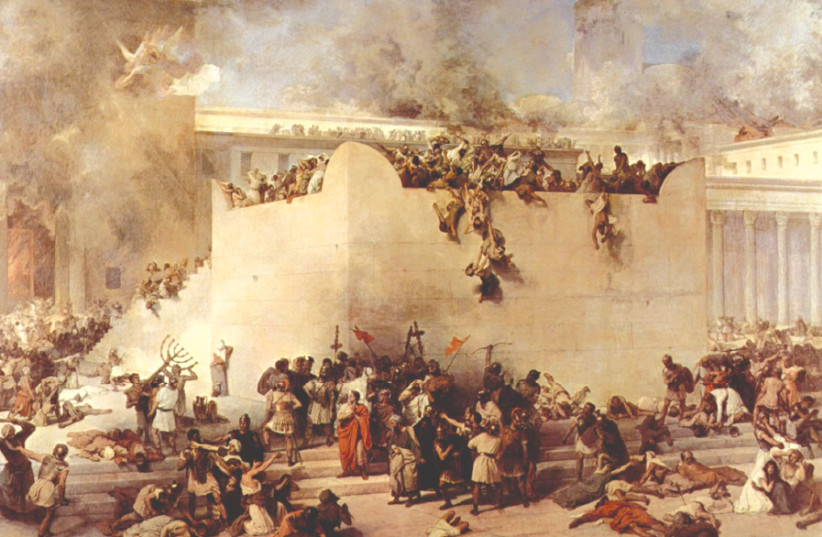 Me, U, Baku, Quba
Me, U, Baku, Quba
JOSHUA COHEN
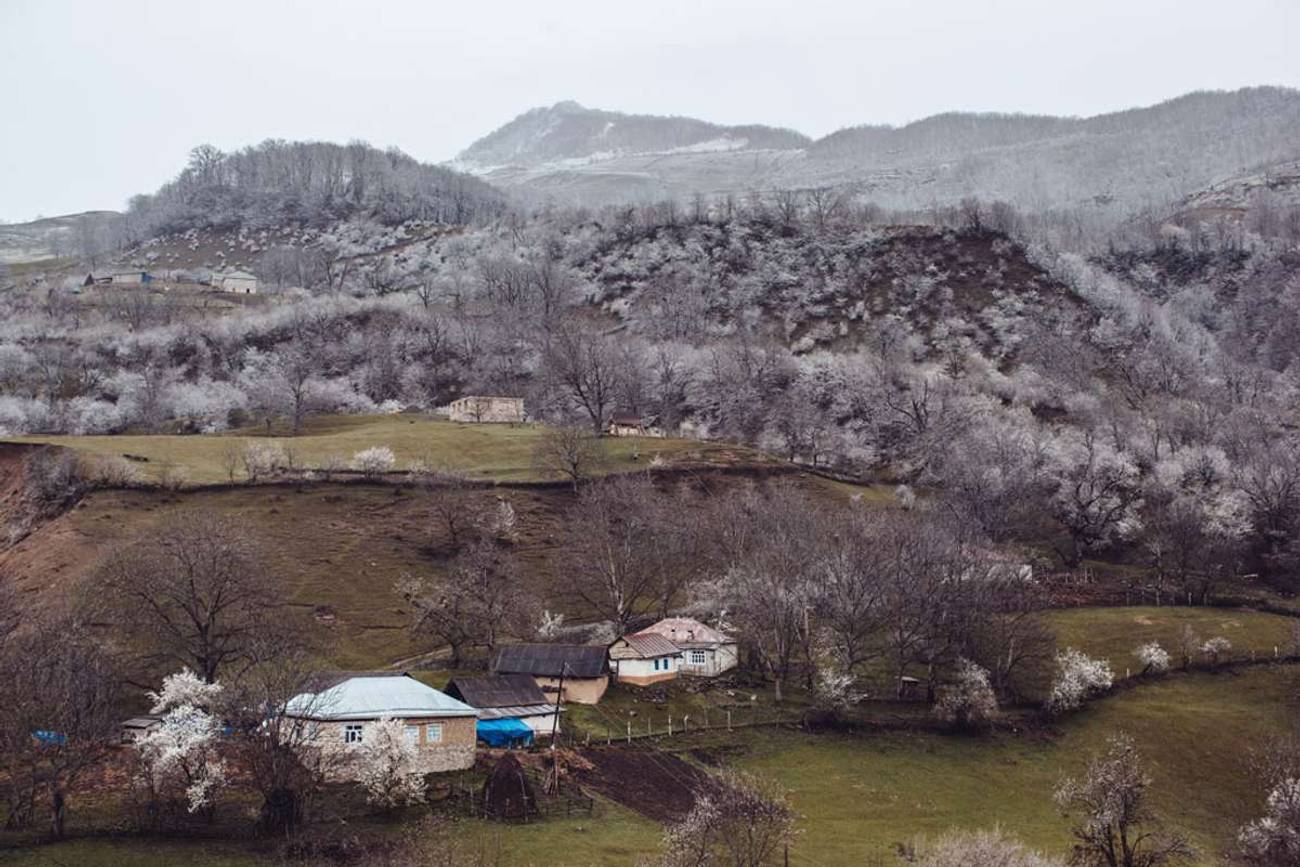 ALL PHOTOS: MAX AVDEEV
ALL PHOTOS: MAX AVDEEV
How a tiny enclave of Mountain Jews in Azerbaijan produced some of the former Soviet world’s richest men.
–
One thing about dictatorships, they’re either very expensive or very cheap to fly to. There’s no such thing as a midrange regime: Extremities charge extremities. I know a guy, it cost him $4,600 just to get to North Korea (Newark-Beijing-Dandong, and then across the DPRK border in a Jeep). I know another guy, it cost him $2,800 just to get to Laos (Newark-Tokyo-Bangkok-Vientiane). I flew nonstop from JFK to Baku, Azerbaijan, visa included, for all of $500. The plane was a brand-new Airbus A340; the pilots were military-grade, and the senior or just older pilot wore medals on his chest that resembled poker-chips: two black, one yellow, which at Trump casinos, back when there were Trump casinos, would’ve been redeemable for $1,200. The flight attendants, uniformed in sky-gray and blood-red, were gorgeous: The men were creatic gym creatures bursting out of their shirts, the women were dripping with makeup and curvaceous, their skirts slit as high as it gets, at least in the world of Islamic female flight attendant fashion. The three exorbitant meals they served over the course of the 10-hour, 30-minute, 5,812 mile/9,353 kilometer flight were culturally specific (mutton stews and breads) and hot (very hot). The in-flight-entertainment selection was operated by individual seatback touchscreen and generous and included, alongside the standard Hollywood and Russian offerings, an impressive selection of Azeri content, all of it bearing the seal of the Ministry of Culture and Tourism of Azerbaijan. I tried to catch up on Star Wars, the prequel trilogy, in order to prepare for the upcoming release of the sequel trilogy, though by the middle of Episode II, Attack of the Clones, I’d had enough and switched to an Azeri property, but it was only in Azeri—no subtitles, no dub—and so I wasn’t able to ascertain whether the lawyer was the good guy, or the bad guy, or not a lawyer at all, and instead a slick plastic surgeon on trial for corrupting his wife.

Most of the plane was empty, with no more than two dozen other passengers, about half of whom would terminate in Baku, with the other half Israeli—Russian-Israelis, Parsim (Persian Israeli), and Teimanim (Yemeni Israelis). Leave it to the Jews to find out that AZAL, the Azerbaijani government’s official airline, or flag-carrier, had been subsidizing ticket prices from America, and so that the cheapest way to get from New York to Tel Aviv was to go through Baku and wait. I’m not sure that this subsidy policy was created for the express purpose of saving Jews money, but then neither am I sure that it was created to encourage visits by American tourists and business travelers. Instead, dictator president Ilham Aliyev just cares about being able to boast domestically that his country now has a biweekly direct flight to New York. The airport, which Aliyev is constantly renovating, as if he were intent on expanding it in tandem with the expansion of the universe, is named for his father, Heydar Aliyev, the previous dictator president. At its center is a glitzy foreign-flights terminal that resembles the Galactic Senate from Star Wars. The landing was baby-gentle; the deplaning swift; the Israelis dispersed to window shop duty-free caviar and Rolexes until their departure for Ben-Gurion. I was processed through immigration and customs, asked no questions, but photographed twice. The first person in Azerbaijan to ask me any questions was my cabdriver: What you doing here? And, What you pay?
I answered the what I doing here? with, I’m a tourist, because to say that I’d come to this majority-Muslim authoritarian country as a writer, let alone as a journalist, would be like saying I’d come to prey on your youth, or to masturbate into the Caspian. I answered the what I pay? with, How about 20 manats?—because that was the amount suggested by “Zaur J” on a msgboard on tripadvisor.com. Other posts had suggested 14, 16, 25, 30, and taking the 116 shuttlebus to the 28th of May train station for 40 qepik, which was roughly a quarter. I settled on 20, because it wasn’t my money. A bit over $12. The driver suggested 25. Which was a bit over $15.
He still hadn’t asked where we were going.
Azerbaijan is a nation bordered by threats and built atop lies. This makes it not too different from any other nation, except: To the south is Iran, to the north is Georgia and a hunk of Russian Dagestan (which doesn’t do much to buffer the rumblings of Chechnya and Ossetia); to the west is a short border with Turkey and a long troubled ton of border shared with hated Armenia, with which Azerbaijan has been engaged in an on-and-off war over the Nagorno-Karabakh exclave since 1988; while to the east is the largest enclosed inland body of water on earth, the oil-and-natural-gas-rich Caspian, whose greatest local landlord is SOCAR (State Oil Company of Azerbaijan Republic), which partners with and administers contracts for the AIOC (the Azerbaijan International Operating Company), a consortium of extractors headed by BP (UK), and including—in order of declining equity—Chevron (USA), INPEX (Japan), Statoil (Norway), ExxonMobil (USA), TPAO (Turkey), ITOCHU (Japan), and ONGC Videsh (India). To make it clearer, Azerbaijan is a seabound country with dwindling but still significant reserves of oil, outsize reserves of natural gas, the highest Shia population percentage in the world after Iran, an ongoing conflict with an Orthodox Christian neighbor, close-enough experience of the Georgian/Abkhazian and Chechen Wars, a sense of Russia as representing the highest of culture, yet a sense of Putin as the lowest of thugs, bent on recapturing a toxic mashup of Soviet/Tsarist glory, and so perpetually reconnoitering the Central Asian steppes for the next Donbass, or Crimea. Dropping oil and natural gas revenues have sparked a rising interest in the previously inimical—because Sunni—Salafism blowing north from Iranian Kurdistan and south from Ciscaucasia. Over 1,500 Azerbaijani citizens are currently in Syria fighting for ISIS.
Baku, the capital, a city of approximately two million people, is a brash glam cesspit of new construction—newly stalled since the global banking crisis and again, since oil and gas have plummeted—surrounded by ruined farmland. To pass from Baku to the countryside is to pass from the twenty-first century to the nineteenth, skipping the twentieth entirely, which was such a downer anyway, everyone pretends not to notice. Throughout the country there isn’t a dominant culture, but an only-culture. Azerbaijani state power, though notionally secular, has the force of Islam and the same vertical structure: bow and scrape. The country’s best criminals are treated like businessmen, and the country’s best businessmen happen to be members of the ruling family. To get a good job, you have to have good connections. To get good connections you have to be born to a good family. To be born to a good family you have to be blessed by a good God. If you find yourself—like, say, the 7.4 million people in Azerbaijan who don’t live in Baku—unlucky enough to be excluded from this system of patronage, or nepotistic oligarchy, you’re fucked. All you can do, in your fuckedness, is put on a fake face and submit. Spend all your money on your car, or your clothes, so that you seem wealthier. Name your firstborn male child after the president or the president’s father so that he seems more employable. Have more female children, because only women can marry up. Take pride in the new pedestrian promenade, along the waterfront. In the skyscrapers you don’t work in. The malls you can’t afford to shop in. Embrace the falsehoods and lead a double life.
So, the truth of why I’d come here—if truth can be spoken, or even spoken of, in Azeri (whose word for truth, haqq, also means justice, and payment):
I was in Baku, only to get the hell out of Baku—to go to the edge of Azerbaijan and up into the Caucasus, the easternmost of the western mountains, or the westernmost of the eastern mountains, where, tectonically, Europe crashes into Asia. I was headed there to enact a submission of my own: to fall down at the Adidas-sneakered feet of the Mountain Jews—a sect of overwhelmingly short, hairy, dark-skinned Semites—who, as craggy cloudbound slope-dwellers, seemed perfectly positioned to offer me the wisdom I was seeking, without any annoying lectures on Orientalism.
 .
.
I wanted to ask these Jews—these fellow Jews—what to do: about how to handle, how personally to handle, for example, the tragedy of capitalism, as it withers into kleptocracy; or Islamic fundamentalism, and the compounding quandary that is Zionism; about how to survive as a writer, when 99% of the world doesn’t read, and when the 1% that does just reads to get offended; about how to deal with publishers, who underpay; and with editors, who overedit; with publications that cut columns and cut rates; with schools that string me along as a lecturer without insurance.
While I didn’t seriously suppose that the Mountain Jews had all the answers, I did suspect, or hope, that they themselves would be the answers. After all, they—their community—might comprise the longest-running mafia in recorded history.
Or semi-recorded—because the Mountain Jews have never written their own history, because writing is too fixed, too fixing, and surely too unremunerative. Instead, they abide in strangers’ pages, shrouded in the oral.
Among their legends are the following, which I’ll list in order from “OK, I’ll Give You the Benefit of the Doubt,” to “Definitely Didn’t Happen”:
Toward the end of the eighth century BCE, the Assyrians conquered the Northern Kingdom of Israel, Samaria, and deported between one and ten of its tribes—between one and ten of the so-called Lost Tribes—for resettlement in their capital, Nineveh, present-day Mosul. But the Assyrian king, Ashur, whom the Mountain Jews associate with Shalmaneser V, mentioned in II Kings, grew so enraged by the Israelites for refusing to forsake their God and for the success they had in commerce that he exiled them to the edge of the empire—to the Caucasus Mountains, where they flourished.
Toward the end of the eighth century BCE, Hoshea, last of the Israelite kings, attempted to gain his kingdom’s independence from Assyria and, as recorded in II Kings, stopped paying the official tribute—10 talents of gold, 1,000 talents of silver—upon Shalmeneser V’s ascension to the throne. Shalmaneser V moved to recoup his losses by imprisoning Hoshea, laying siege to Samaria, and seizing the property of between one and ten of its tribes—the property of between one and ten of the so-called Lost Tribes—whom he or his successor, Sargon II, exiled to the edge of the empire—to the Caucasus Mountains, where they flourished.
Toward the end of the eighth century BCE, under the reign of Hoshea, around 20,000 Israelites fled the destruction of their kingdom—or left to seek unimperiled trade routes between east and west—or traveled en masse to Nineveh to post bail and free Hoshea from debtors prison, but failed—or traveled en masse to press an alliance against the Assyrians with the Egyptian King So (either Tefnakht of Sais or Osorkon IV of Tanis) but went astray. They passed through Assyria, Babylonia, and Persia before settling atop the Caucasus Mountains, where they flourished.
The more scholarly proposals of Mountain Jewish origin, the few of them there are, prove just as fascinating/unsatisfactory:
Jews came from the Israelite Kingdom to Persia ca. eighth century BCE; Persian Jews came to Greater Caucasia—the area between the Black and Caspian Seas—ca. fifth century CE. With the incursions of Goths and/or Huns from the Black Sea region, across the Pontic steppe, the Parthian and/or Sassanid Empires (third century BC to third century CE, the former) (third century CE to seventh century CE, the latter) required a border defense force. Considering the Jews to be exemplary warriors, the Parthian and/or Sassanid kings resettled them in the Caucasus.
In the fifth century CE, Sassanid King Yazdegerd II forced all the peoples he conquered to convert to Zoroastrianism and embarked on violent persecutions of Assyrian and Armenian Christians, and Persian and Armenian Jews, with the result that the latter two fled, either together or separately, to the Caucasus.
By the eighth century CE, a nomadic Turkic people called the Khazars, or Kuzari, had relinquished their syncretic religion of Tengriism (worship of the Turkic sky god Tengri), Islam, Christianity, and Judaism, and converted exclusively to Judaism. Formerly a trading partner between Byzantium and the Sassanids, and then between Byzantium and the Ummayads, the Khazars now became enemies of both, as well as of Kievn Rus, whose prince, Sviatoslav I, razed their de facto capital, Atil—located along the Volga—whose population sought shelter in the Caucasus.
In or around the ninth century CE, one or more of the minor khanates around the Caspian attempted to break what it or they regarded as a Jewish monopoly on maritime and overland trade by expelling its or their Jews from the coastal plain to the Caucasus, where they flourished. Or one or more of the minor khanates sent its or their Jews up into the mountains to act as a frontier guard. Or sent its or their Jews up into the mountain passes to act as basically inspectors and toll collectors—enforcing tariffs, imposing duties. Or else the Jews, either compelled to quit or perhaps even quitting the coastal plain of their own accord, went rogue up in the Caucasus, and appointed themselves frontier guards, inspectors, and/or toll collectors—extorting tribute and/or protection payments from any and all passing through.
By the late 1600s, Jews of Persian descent, fleeing the persecutions of the Persian Safavids for the fraying borders of the Lak Gazikumukh Shamkhalate, had established themselves on the shores of the Caspian near Derbent—today the second-largest city in Dagestan, and the southernmost city in Russia—in a settlement called Aba-Sava. The Shamkhalate, in a bid to prevent the Safavids from advantaging its weaknesses and annexing its holdings, struck an alliance with Catherine the Great. The Jews, who traded with everyone—the Shamkhalate, the Russians, the Safavids—had alliances with none. Aba-Sava was destroyed in either the second, or third, Russo-Persian War, and its Jews were half slaughtered, half scattered, and found shelter only under the Russian-aligned reign of Fatali Khan, ruler of the Quba Khanate, and conqueror of Derbent, who dispersed them to remote mountain towns of his dominion.
Regardless of which interpretation you hold with, the situation seems to be this: Somehow, a loose group of Jews that spoke a dialect of Persian that contained elements of Hebrew—a dialect now called Judeo-Tat, or Juhuri, or Gorsky—found themselves virtually alone high up in the rebarbative Caucasus, where—for a period of 200 years, or 2,000 years, give or take a grain of salt—they seem to have controlled most of the mountain passes, and so most of the caravanning traffic, on that tangle of routes as gossamer as thread that the German geographer Ferdinand von Richthofen (1833–1905) immortalized as the Silk Road (die Seidenstraße).
Few goods could cross the Pontic steppe—between Persia, Arabia, India, China, etc., and Europe—without the Mountain Jews taking a cut. Few good merchants could avoid saddling and gapping their peaks—unless, just before the Bolshevik Revolution, they wanted to take the Transcaspian Railway from Tashkent, Samarqand, or Bukhara, to Turkmenbashi, and then a steamer across the Caspian Sea to Baku, then the Trans-Caucasian Railway to Batumi, and then a steamer across the Black Sea to Odessa—unless, just after the Bolshevik Revolution, they wanted to take an airplane.
But then even since the invention of the airplane and intermodal freight, the Mountain Jews haven’t done too poorly.
Of the approximately 200,000 Judeo-Tats, or Juhuros, or Gorsky Jews in existence (gora means mountain in Russian), half live in Israel, and about 20,000 in the States; many of the rest are in Russia, mostly in Moscow—and in Azerbaijan, mostly in Baku. Only a few still live in their ancestral auls (fortified, or once upon a time fortified, settlements), midway up the flanks of mountains along two of the Caucasus’s three major ranges, many of which are inaccessible today because the lines they obey are of faults, not borders; and though the armies camped atop the crust can’t stop the sediment, Azerbaijanis can and do stop Armenians from crossing, and Armenians can and do stop Azerbaijanis from crossing, and each stops the other from crossing into the de facto independent but unrecognized republic of Nagorno-Karabakh; Turks stop Armenians from crossing and Armenians stop Turks from crossing; Georgians stop Russians from crossing, and Russians stop Georgians from crossing (not only the Russian republics of Dagestan, Chechnya, Ingushetia, North Ossetia, Kabardino-Balkaria, and Karachay-Cherkessia, but also the partially recognized breakaway-from-Georgia state of South Ossetia; the partially recognized breakaway-from-Georgia state of Abkhazia; and the breakaway-from-Georgian autonomous republic of Adjara).
The Mountain Jews are a sect of overwhelmingly short, hairy, dark-skinned Semites, who, as craggy cloudbound slope-dwellers, seemed perfectly positioned to offer me the wisdom I was seeking.
Because if Azerbaijan has become the Mountain Jews’ sanctuary, Russia is now their bazaar—its appetites have made their fortune. Mountain Jews of my own generation, who came of age under Yeltsin’s two terms of larceny and greed, moved into Moscow, St. Petersburg, and the vast cities of Siberia that have less name recognition, but more manufacturing infrastructure and coal mines. There they went about privatizing. Here’s what privatizing means: When a state that owns everything disintegrates, suddenly everything’s up for grabs; if you want a shop, or a factory, or an entire industry, say, you just show up and claim it as yours; the cops can’t kick you out, because there aren’t any cops—the cops don’t stay cops when they’re not getting paid—and so you dig in, and, should other parties arrive to stake their claims, you just have to hope that you have more and bigger men, and more and bigger guns, than they do. To give two examples—not to accuse them of having done anything like this, but merely to admire them if they had—God Nisanov (b. 1972), and Zarah Iliev (b. 1966). Both moved to Moscow in the early ’90s and immediately went underground, taking over kiosks throughout the drafty cavernous Metro, whose stations had been designed to serve as bomb-shelters, but now were also becoming groceries and malls. Nisanov and Iliev began shipping produce to the capital, setting up construction firms, and investing in real estate. Today, they’re the largest commercial real-estate developers in Moscow, with properties including the Evropeyskiy Shopping Center, the Radisson Royal Hotel, the Radisson Slavyanskaya Hotel, myriad office parks, and wholesale and retail commodity markets (food, appliances, electronics, etc.). As of 2015, Forbes estimated the net worth of each at $4.9 billion, which tied them for the title of twenty-fourth richest person in Russia. In 2014, Nisanov was awarded the Order of Friendship by Putin and was elected to the executive committee of the World Jewish Congress.
Both Nisanov and Iliev were born in the most venerable of the Mountain Jewish auls, Quba. Pronounced Guba. Actually, they’re from a Jewish enclave located just outside Quba, which in Azeri is called Qırmızı Qəsəbə, and in Russian is called Yevreiskaya Sloboda (Jewish Town), though under the Soviet period its name was changed to Krasnaya Sloboda (Red Town). Now, it shouldn’t seem particularly strange that a village of fewer than 3,800 people produced two childhood friends who grew up to become billionaires together. But it should seem particularly strange that this village currently boasts four billionaires, and at least twelve (by one count) and eighteen (by another) worth in the hundreds of millions. They include, as already noted, major property developers and commodity importers, but also car importers, clothing importers, and the managers of the Azerbaijani government’s oil and gas portfolios.
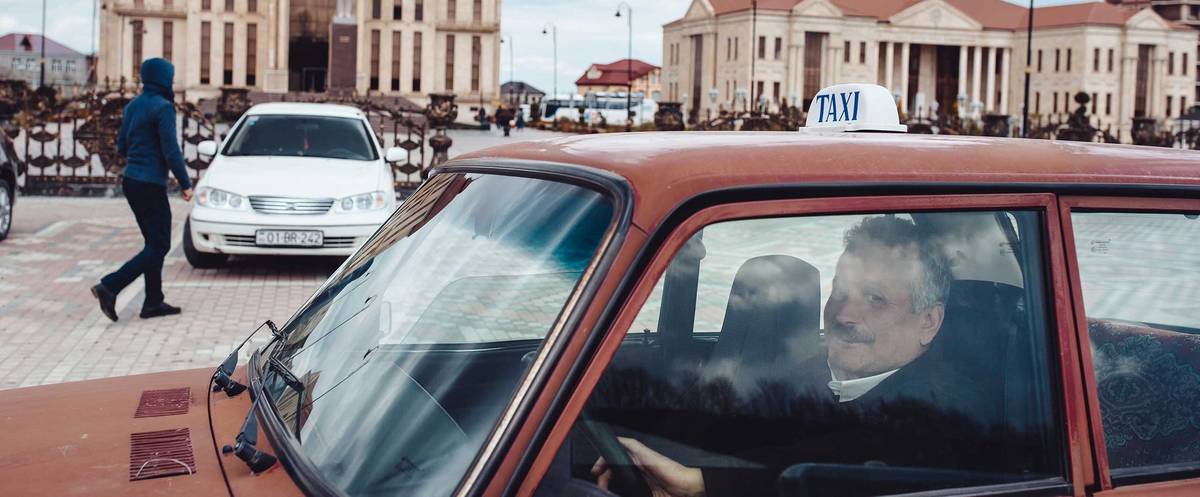 MAX AVDEEV
MAX AVDEEV
.
In any event, I called the man’s number, introduced myself, in English, as a novelist—not as a journalist. I figured, because my friend had told him to expect the call, that he already had my name, and I was searchable online; I also figured the man lived in America, he knew what a novelist was—he knew that it meant “vicarious thrillseeker,” or “coward.” He immediately tried frustrating my interest, but I continued to pester, and finally got him to set a meeting. Which he canceled. I got him to set another meeting, and he canceled again, but at least had pretensions to courtesy, and txted me a local, Baku, number. I searched the number online, and it was the same one listed on the site for the Mountain Jewish community office, whose address was the same as that of Mountain Jewish central synagogue. But by the time I realized all that, I’d already signed a contract, and a check for expenses had cleared my account. Not only that: I’d already flown halfway across the globe and was sitting on the bed of my hotel, the Intourist, laptop on my lap, phone suctioned to my cheek, being reminded—as the number I kept dialing kept ringing—why I’d given up writing nonfiction, for fiction …
I went to the address listed on the site, ostensibly just a leisurely stroll from the Intourist, but either the address was wrong, or the street sign was: Under the Aliyevs, many of the streets in Baku have been stripped of their Russian names and given appellations in Azeri. Some of the more conscientious businesses list both street names on their sites. Most, however, don’t bother. Then there’s the issue of Azeri orthography, which further complicates map usage. Formerly, Azeri had been written in Perso-Arabic; in the 1920s the Latinesque Common Turkic alphabet was adopted; in 1939, the Soviets forced the adoption of the Cyrillic alphabet; after Sovietism, Latinesque Common Turkic was reinstated, and it was only in 1992 that the schwa, or ə, so prevalent in the name of the street I was searching for—Şəmsi Bədəlbəyli—was called into service to replace the diaeresistic—umlauted—a. One map listed Şəmsi Bədəlbəyli as Shamsi Bedelbeyli, and another as Shämsi Bädälbäyli (apparently a formidable Azeri theater actor and director). Whatever its spelling, the boulevard I eventually stumbled upon was a double-boulevard, and wide, but composed of many tiny lanes thronged with many tiny cars; its northbound and southbound congeries were divided by an island of freshly planted parkland—the grass not yet sprouted over the sprinklerheads—beyond which, on the distant side, was the dormant worksite of a massive condo project: Beaux-Arts trimmings atop concrete bunkers separated by gravel lots like bulldozer caravanserais. Catercorner to the condos, I found it: the community office, the central synagogue—the Baku HQ of the Mountain Jews. It was an immense new building of austere Art Deco detailing that, given its sharpcornered cleanliness and shine, seemed two-dimensional, like an architectural rendering, a placard of itself: This Will Be Built On This Site.
It was amazing to me that this structure had another dimension—it was amazing that I was able to step inside. Though only for a moment.
A man strode up and, in response to my asking in Hebrew, said he spoke Hebrew. He was tall, skinny like he had a parasite, and wore a flatcap and trenchcoat indoors. He was between thirty and forty, I’d guess, but had a sparse scraggly beard—like he’d five-fingered it off the face of a surly teenager. He wouldn’t give his name—I mean his own name—or he couldn’t. It turned out that he couldn’t speak Hebrew, or what he spoke of it wasn’t just jumbled, but jumbled with rigor: morning (boker) was evening (erev) and vice-versa, six (sheysh) was seven (sheva) and vice-versa, the ark (aron) was a prayerbook (siddur). After showing me around the synagogue proper, he took me into the facility’s community center portion and showed me a wall of portraits of Mountain Jewish heroes of Azerbaijan’s wars, and another wall of portraits of Mountain Jewish leaders posing alongside Putin, Netanyahu, both the Aliyevs, George W. Bush, Sheldon Adelson, and assorted Azerbaijani mullahs from the government’s Committee for Religious Organizations. Then he hit me up for a donation—he didn’t confuse the word for charity, tzedakah. I gave him 5 manats, and asked if he knew any Mountain Jews who’d be willing to take me to Quba. He shook his head—meaning he didn’t know? or didn’t understand?—shook my hand, and ushered me out the door.
From the six or so years I lived and worked as a journalist throughout Eastern Europe, I was used to this stripe of wariness. No one who grew up in an authoritarian regime likes to or, honestly, can, answer a question directly. Everyone hesitates, dissembles, feels each other out. Feels out, that is, the type and degree of trouble that truthfulness, if they’re even capable of truthfulness, might get them into. In most post-Soviet countries this Cold War ice can usually be broken or, at a minimum, thawed, by a bribe, or through the vigorous application of alcohol. But here, in this Muslim country whose signature intoxicant was tea, alcohol wasn’t an option.
So I headed back to Brooklyn.
By which I mean: I went to find the Azerbaijan Chabad House.
Chabad Lubavitch is a Hasidic religious movement based in Brooklyn, which—like a yarmulke-wearing, spiritually focused version of a UN taskforce or NGO—dispatches its rabbis all over the world, to provide essential religious services in places where there aren’t many Jews—in Asia, Africa, even Antarctica, though they’re especially active in places where there haven’t been many Jews for a while, thanks to the Soviets, or Nazis. They’re basically a missionary organization, except they don’t convert so much as reclaim: They bring the unaffiliated back into the fold. Now, that’s a laudable brief for an organization to have, but there’s also a dark side, in that Chabad, at one extreme, is something of a messianic cult (some of the rabbis proclaim an uncomfortable fealty to their deceased leader, Menachem Mendel Schneerson, the Lubavitcher rebbe), and insists on imposing its parochial brand of Ashkenazi Judaism—Eastern European Hasidic Judaism—no matter the local tradition, or preference.
There’s also this pesky issue that a few of their rabbinic emissaries have had with, OK, money-laundering.
What might’ve licensed that behavior is a quirk of history: European Jews, not just in the East but throughout the continent, had almost always been required by the governments of the countries they lived in to identify as Jewish. Even after forced registrations became census requests, Jews tended to continue the practice on their own: If they gave charity to or attended their synagogue, there was a fair chance their home city or province’s community had their name and address on file. These community rolls made the Nazi genocide that much more efficient. After the fall of Sovietism, amid the aforementioned rash of privatization, nascent independent countries like Poland and Czechoslovakia found themselves steeped in unclaimed property, a lot of which had belonged to Jews, a lot of whom were dead. Meanwhile, young ambitious Jews of the postwar generations, many with limited Jewish education and even limited Jewish identification, were busy reorganizing their official communities into nonprofit religious entities. Having varying levels of access to their prewar rolls, they applied to state, provincial, and city governments, not just for the restitution of their rightful infrastructure—their synagogues, and cemeteries—but also for the restitution of the properties of their exterminated members who’d left no next of kin. Not many of these Jewish communities had rabbis; Chabad had rabbis—trained in America and Israel. Chabad sent its rabbis to open Chabad Houses—from which they directed prayers, classes, food-and-clothing drives, and lifecycle ceremonies (mostly funerals)—and while the preponderance of the sect’s emissaries stuck to mission principles and successfully renewed Jewish life, a few were tempted, or invited, to infiltrate the administrations of their governmentally-sanctioned communities, and took up posts as official Chief or Head Rabbis—which gave them nominal power over the management of community real-estate portfolios. Some of this real estate was extraordinarily lucrative. For instance: much of the downtown tourist districts of Krakow and Prague. Local influential Jews, inured to the inversions of Sovietism, in which the state was the criminal, and they were merely businessmen, would cut deals with the Chabad rabbis assigned to them, supporting the movement and smoothing its way in return for using this reclaimed infrastructure to clean their money—say, a Russian Jew from Odessa who in the 1990s amid the ludicrous inflation and loan defaults of independent Ukraine gets involved in the counterfeit luggage racket, and launders his profits through a storefront in a community-owned, because community-restituted, building that before it’d been nationalized by the Soviets and devastated by the Nazis had belonged to a Jewish family that’d been liquidated in the camp at Bogdanovka. I once, at a very tender, pious, and moronic age, tried to report on this phenomenon—a phenomenon that, in retrospect, I now find utterly rational and tolerable—and, in return for my sanctimony, in the course of a single day, one man threatened my life, and another man handed me an envelope crammed with cash that kept me housed and fed and working on a novel for nearly all of 2004. Suffice it to say, I’m no Chabad booster. But still, if I could never completely bring myself to trust Hasidim, I could at least trust Hasidim to be Hasidim.
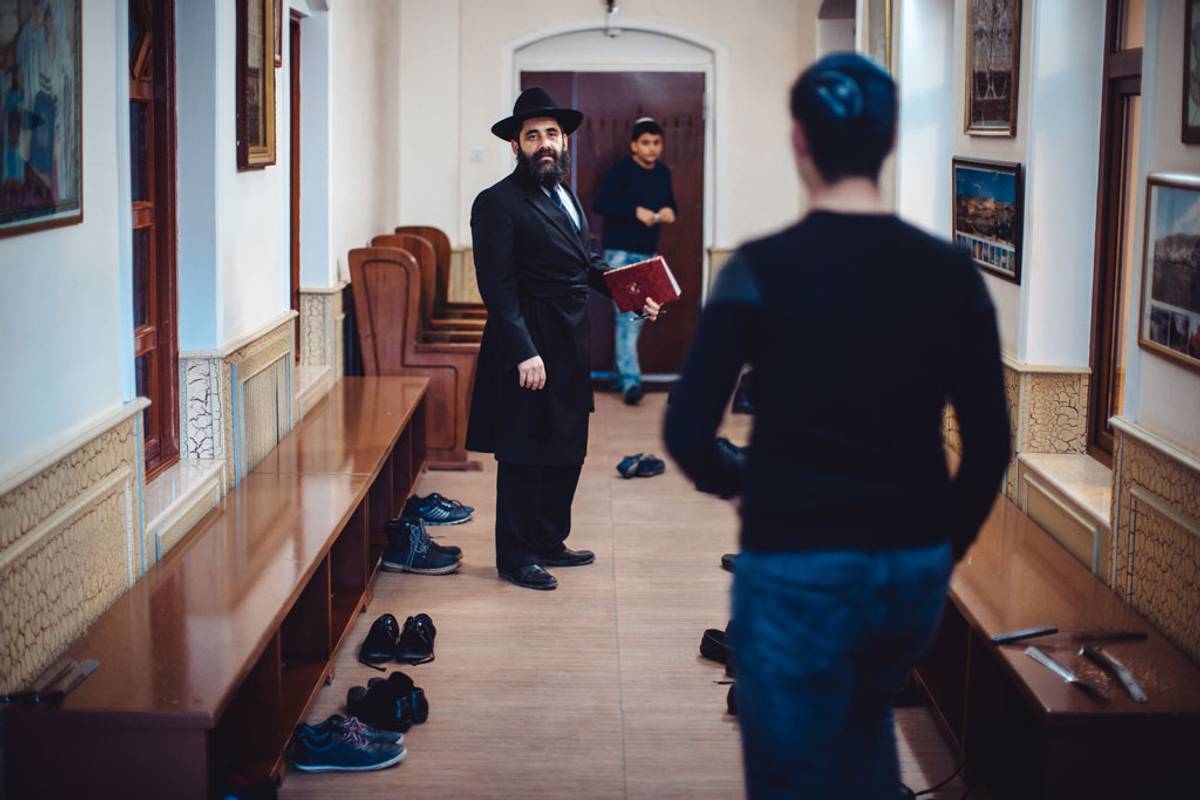
read more here
Zawartość publikowanych artykułów i materiałów nie reprezentuje poglądów ani opinii Reunion’68,
ani też webmastera Blogu Reunion’68, chyba ze jest to wyraźnie zaznaczone.
Twoje uwagi, linki, własne artykuły lub wiadomości prześlij na adres:
webmaster@reunion68.com









